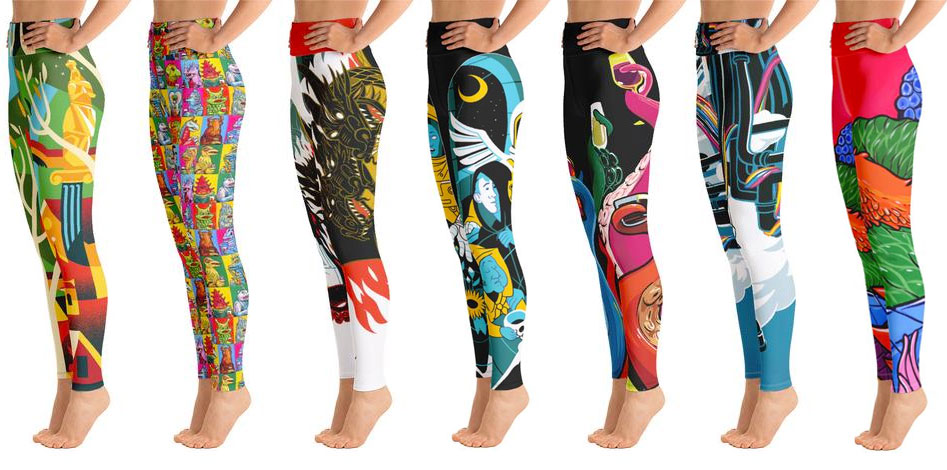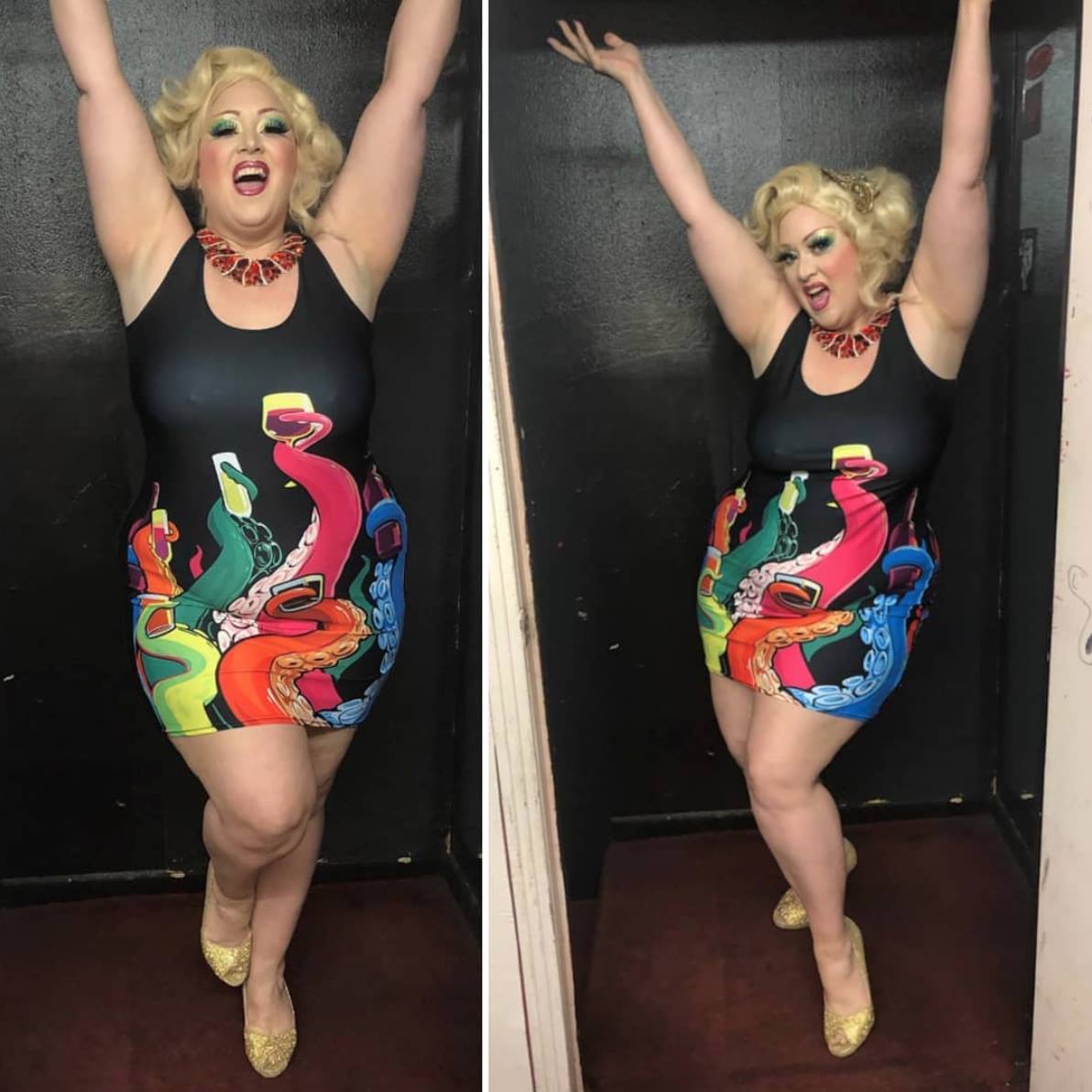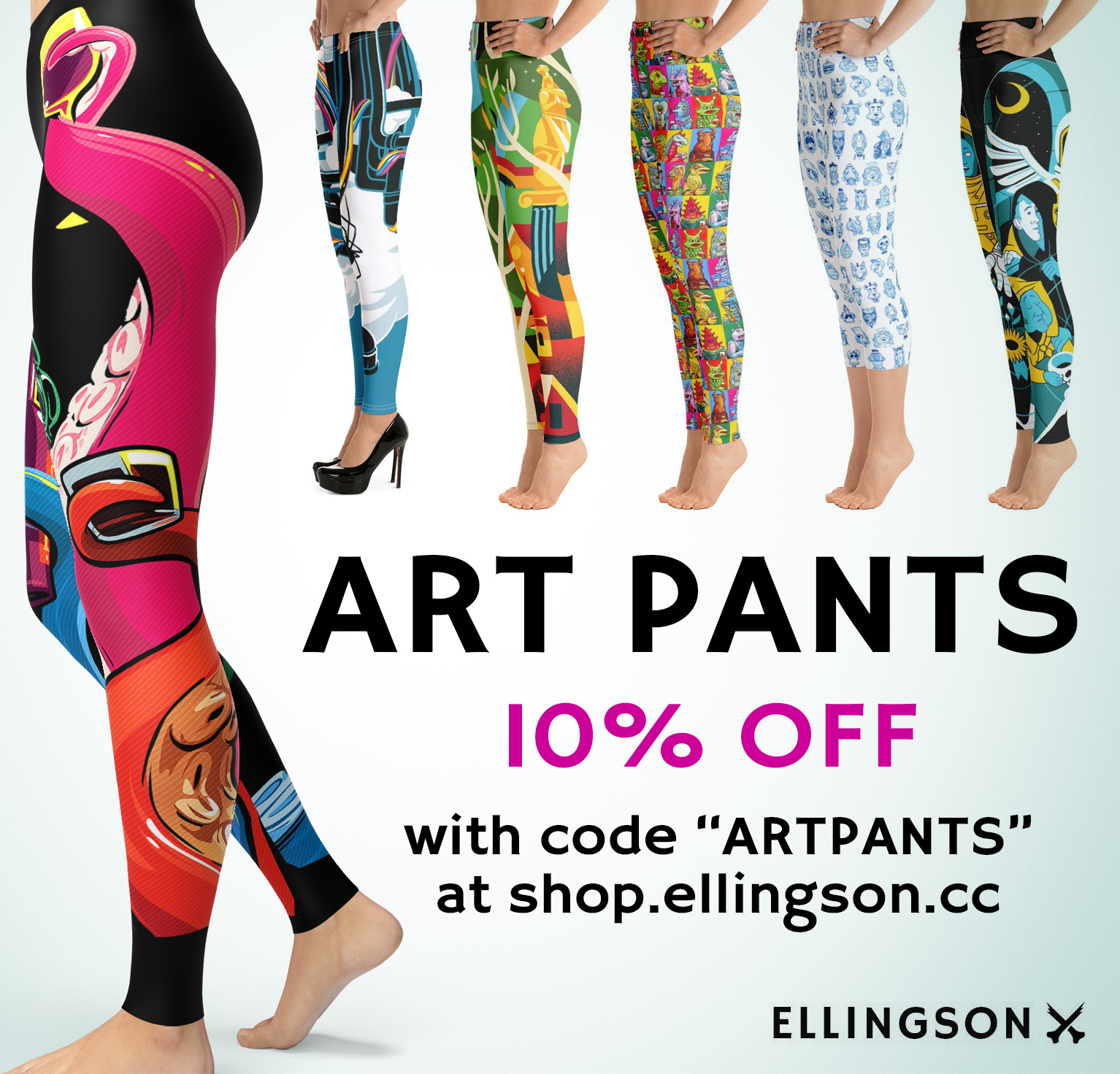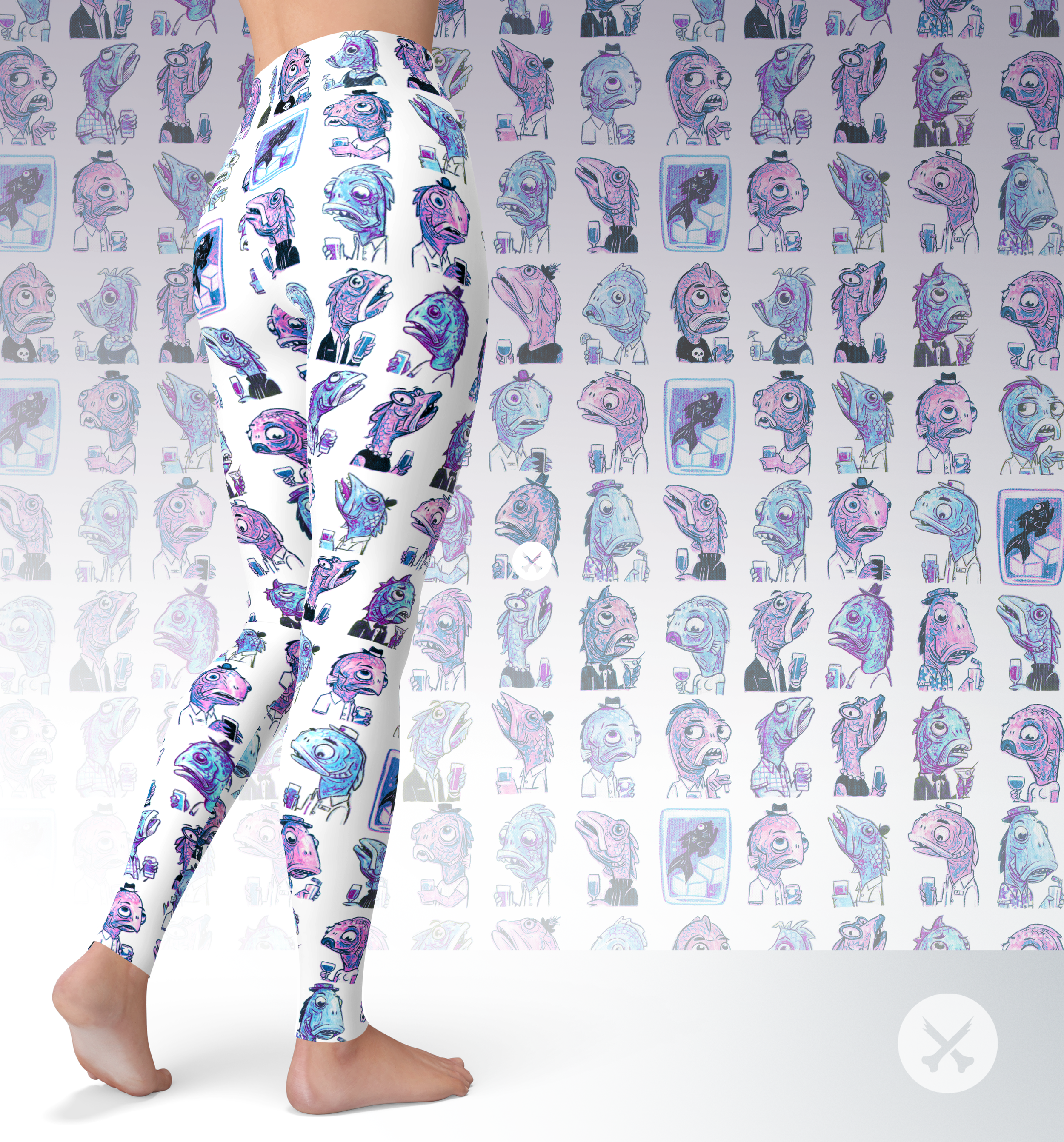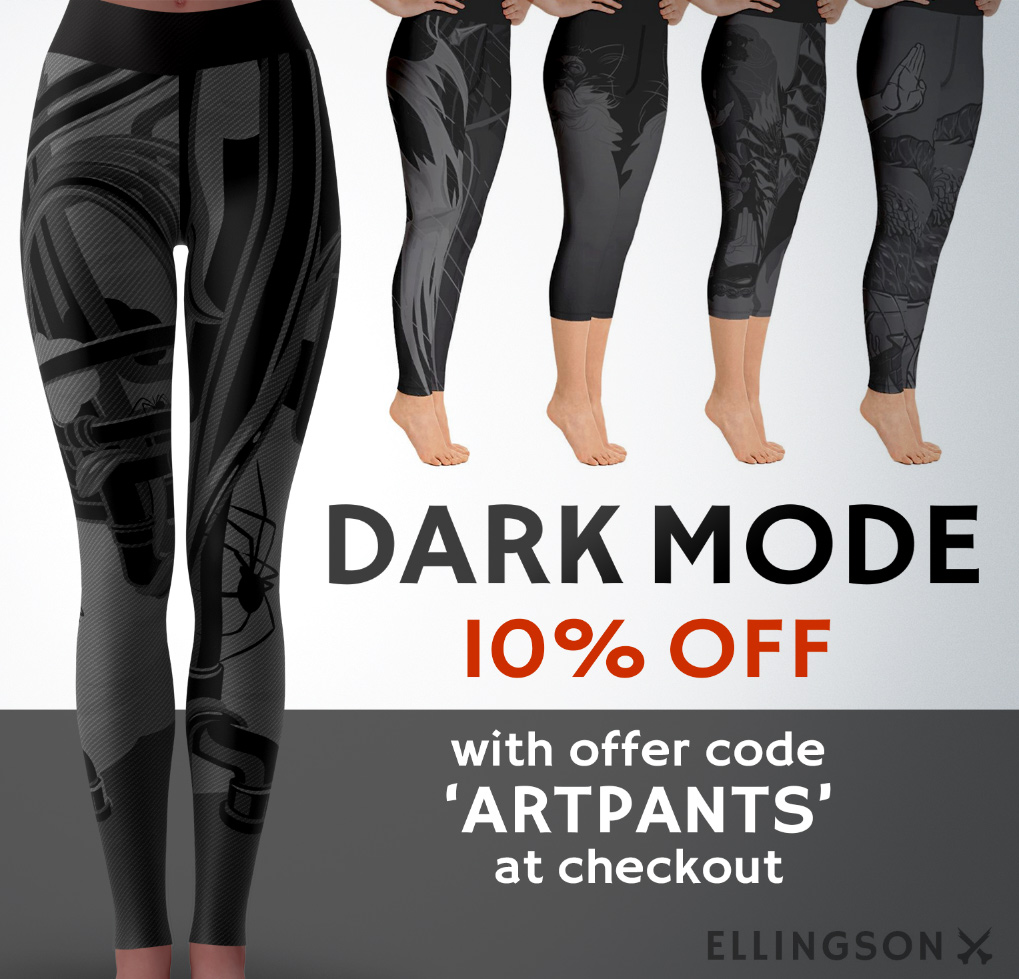For the last month, I've given myself a crash course on the latest in on-demand printing and online shopping options. It started because I was confused with the fees Etsy was charging me and, before I knew it, I was selling women's stretch pants from my own online store using a modern API powered on-demand e-commerce platform. My feeling is that soon everyone will want to sell artwork this way and not just on leggings. So, I thought I'd share some of my experiences here in case that helps clarify some things and maybe someone will make fewer mistakes than I have so far with this exciting technology.
Shopify
Like I mentioned earlier, the move to my own store from Etsy was mainly out of frustration with the way fees are handled on Etsy. Automatic re-list fees, confusing payouts, and other small annoyances made me take a look at alternatives. I looked at BigCartel and Squarespace, but their shipping options both depended on expensive upgrades to the subscription and both of those services have limited payment options. I actually have a Squarespace website but I don't like the look of the store that comes with my chosen template. So, I decided to look closer at Shopify. Shopify isn't cheap at $30/month and can get more expensive quickly with its marketplace of third-party "apps". These apps are upgrades that give your store new powers for the price of an added subscription. Some apps are free but many start at $9/month. More about apps later.
The first thing I did was to make my Etsy inventory available on Shopify. I picked a simple free template layout and soon found that adding items to Shopify was very easy. The admin controls are well thought out and it didn't take long to get a basic store going. I posted about my simple new shop on Facebook and some friends commented that they liked using Printful with Shopify. "What's Printful?", I thought. And this is where the ground opened up and swallowed me for about a month.
On-Demand Printing
Selling things "on-demand" is the concept of making things and shipping them as each order arrives. This has been the promise of internet shopping for a long time and some products do it very well. Vans has a shoe customizing app where you can build your own sneakers made-to-order with uploaded images, different fabrics, and wild colors. Moo lets customers print short runs of business cards with each card having it's own unique image. Customizing per order is a huge advantage for printing, but on-demand has other advantages too.
For me, this method for selling means that I don't have to keep so much inventory. I have limited space and I also don't want to spend hundreds or thousands of dollars for unsold items sitting in boxes. So, my apparel offerings are sold through on-demand vendors and small things like pins or flat signed things like prints are sold through my tiny home studio.
Another advantage to printing with on-demand vendors is location independence. For instance, I have a long trip planned but I won't have to worry about running to the post office to send out an order because my vendor will be taking care of that. I know that this isn't specific to on-demand printing, but it's nice to have a built-in fulfillment option for those items.
I stand by my pants
Printful
Printful is a printing service that can make all manner of on-demand items and ship them from their facilities to customers all over the world. They also offer warehouse shipping in-case you want to send them other items to ship. For printing, they basically sell you a blank item at a base cost, you mark it up to match your needs, and then they print and fulfill the item as it sells on your store.
The best part about Shopify is that it can talk to vendors like Printful to have things printed and paid for behind the scenes. Once it's set up with Shopify, the flow is like this:
Order arrives from Shopify - "Boop, you sold somethin'!" (if you have the mobile app, it literally makes a cash register sound when something sells. Thrilling!)
Payment confirmation of retail price occurs - "You've got money!"
Printful bills your payment method for the base cost of the item "Fog-horn sound." (no actual fog horn sound in the app, unfortunately.)
The item goes into a queue for production and eventually gets sent out to the customer
If you've ever used an online printer for something like postcards or invitations, you'll have no trouble with Printful. You can upload jpgs and pngs and place them onto a mock-up the item that you're creating. There are PDF and PSD templates for each item and those are very handy. The template download links aren't very obvious, but they are worth seeking out. I wish I had found them sooner than I did.
What's the Big Deal with Sublimation Printing?
Beyond the automated and on-demand transaction technology, the really exciting thing here is the printing. When I think of the early days of on-demand printers like Cafe Press and Redbubble it brings back memories of cheap heat-transfer prints and toxic smelling tshirt bags. Apparently things have come a long way in the last ten years or so. New large format dye sublimation cut-and-sew garments are crazily high-resolution and can be printed all over the item. Dye from a transfer sheet is released as a gas into the fabric with heat where it bonds directly to the fibers. This is different that a stick-on heat transfer as it doesn't create a sheet of material that sits on top of the garment. The ink becomes part of the garment.
This is actually better than screen printing in many ways and it's amazing that it can be affordably handled on an on-demand basis. If you've ever seen someone walking around in a track suit covered in a photo collage of kittens or chicken and waffles, you've seen sublimation cut-and-sew printing. Are polyester pants with kittens superior to something carefully color separated and screen printed by hand? That might be like comparing apples to oranges or chicken to waffles. At any rate, Printful offers a number of different items using this technique and so far I am impressed.
A Note on Sublimation - Watch out for sublimation that is not “cut-and-sew”. Some garments are printed with sublimation after they are already assembled This can cause gaps in where the artwork can reach, particularly around the seams (think armpits). It can also cause misprints where the garment doesn't lay flat when the dye sublimation occurs. I've found that it's best to use cut-and-sew items for all-over printing. In this method, flat sheets of fabric are printed and then cut to the shape of the item, and then sewn together after printing.
A Note on Fabric - Apparently synthetic fabrics work best with the dye sublimation technology. It's something about the way that the gaseous dye is accepted by the fibers, I guess. Things seem to be progressing though, so perhaps it won't be long before cotton is offered, or some other natural material with less of a sheen. For now, though, it's perfect for stretch pants.
Direct to Garment vs. Dye Sublimation - Sublimation printing is not the same as "Direct To Garment" printing. DTG printers are like inkjet printers for t-shirts. They make amazing multi-color images on fabric but it's a completely different technology. Most vendors offer both of these methods for different items.
Spoonflower’s “Minky” fabric
Spoonflower
Spoonflower prints and ships unsewn swaths of customized fabric and wallpaper, ordered by the yard. This is great if you know how to sew or need a large portion of wall covered. I used Spoonflower to recreate my grandmother's wallpaper pattern into a blanket for holiday gifts last Christmas. It's incredible and perplexing how they can reproduce graphics on soft fabrics with high resolution. I actually don't understand the process, but if you need fluffy material with your artwork on it, Spoonflower is the way to go.
Other Vendors
Earlier, I said that the best part about Shopify is that you can use Printful to populate your store. The second best thing about Shopify is that you can use other vendors too. For instance, I like that Gooten prints body pillows. So, I can use Gooten to print and fulfill body pillow orders in the same way that I use Printful for leggings. The experience for the customer is that both items are sitting on the same shelf in your store. It's pretty great. There are many different vendors that tie into Shopify and most of them offer the same sort of items. Here are some of the vendors that I thought had unique items to offer.
Art of Where (kimonos and beanies)
Gooten (ties, dog beds, woven blankets)
PAOM (high-dollar, custom made specialty all-over products)
Teelaunch (dog bowls, plates/platters, wraparound phone cases)
Shipping
The thing that I kept coming back to was the problem of shipping. This, apparently, is the thing Etsy had on lock. From the beginning, I wanted to offer live USPS shipping rates for different item weights and classes. I wanted to cheaply send pins to Texas and priority international rate tubes of art to London. However, just about every e-commerce platform squeezes hard for this feature. Squarepace wants you to upgrade to a pro plan and use Shipstation as an add-on. Bigcartel does something similar. It's baked in with Etsy, and I have to say it's probably the best thing about their service. With my Shopify store, it wasn't getting any simpler. By using third-party printing vendors, it's even more confusing. Some items are shipping from Gooten, some from my studio, and some from Printful. Shopify offers a number of apps to conquer the carrier-rate blended shipping hurdle, but most of them require Shopify mid-tier plan of $80/mo or the Advanced Shopify plat at a whopping $299/mo. Those apps also come with a subscription and vary in rates depending on the complexity of your shipping needs.
Here is a tip! - It's not widely publicized, but Shopify does offer compatibility with shipping apps at the basic $30/mo plan. You just have to pay annually upfront instead of monthly (you also save 13% for the year this way) and you have to contact customer support directly to have them manually enable Carrier Calculated Shipping. Once CCS is enabled, shipping apps can help bring blended shipping to your store across vendors. For the first couple of weeks, I'm sure I scared off some customers that were probably seeing multiple shipping fees add up in their carts as they added items. With the right app and CCS, customers can see a carrier calculated shipping rate that blends shipping costs together in a way that is more predictable and hopefully more affordable. I recommend the Advanced Shipping Rules app. It'll add $9/mo to your store but it might be worth it after scaring away fewer customers with unruly shipping charges.
Customer Photos
My favorite part of this whole venture is seeing the happy photos come in from friends and family that supported me. Waiting for the first wave of products to ship was a bit worrisome, as I'd never offered all-over printed things before. Thankfully, Printful's leggings are top-notch and reviews were positive from almost everyone with awesome photos to match. If I have advice about customer pics, I'd say that you should check to be one-hundred percent sure that it's cool to repost a photo. Again, I get excited every time I see a new photo of the products in the wild, especially when there's a familiar face along with it.
Ads
I has some success the first week after offering leggings on my shop. Enthusiastic friends and family members really seem to drive excitement for this fun and unexpected product. I was excited too, seeing my older catalog of artwork come to life in this new dimension. So, riding on that high, sales were pretty good! But support from friends and family kind of has a short burn and you might not want to pressure your aunt into too many pairs of your colorful tights. So, in order to reach beyond my social network, I dipped into the sinister world of promoted posts. This is all still very new to me and I'm still going about it pretty ham-fisted, to be honest. What I can say is that Facebook ads haven't been great for business and maybe Instagram is better. I've made some ads with text in various flavors of obnoxiousness and, while I haven't done and A-B testing, less seems to be more. Without a photography budget, I’ve been leaning hard on the mock-ups that Printful generates to use as ad imagery. I also use WebandCat’s handy Leggings Mock-Up template for Photoshop. For ad targeting, I try to think outside of my normal art audience. Because it's leggings, I usually shoot for women ages 20-60 that might be interested in things like fashion and/fitness. Again, it's early days for my store and it remains to be seen how the ads might or might not help.
Resources
So, you're in the art pants business now! Need some help, do ya'? Maybe you need to generate some 3d mock-ups or a photo of a t-shirt that doesn't exist in real-life yet. Apparently, there's a whole cottage industry for that! Maybe if the leggings thing doesn't work out, you can use your Photoshop skills to create mock-ups for other hopefuls.
Shopify and Printful also offer resources for building brands, making effective ads, and things like that. I guess it makes sense for them to want your store to succeed or something.
Why Would You Do This?
A smarter person might have just kept a small BigCartel store for on-hand items and used something like Threadless for leggings, shower curtains, etc. and maybe even kept Etsy around for that sweet-sweet carrier shipping, built-in community, and inventory control. Using a pre-built marketplace like Etsy and Threadless does cut down on risk because they've got all their own Terms of Service Agreements, Returns and Exchange Policies (oh yeah, you'll want to write one of those), and simple payout schemes.
However, I like to figure things out and push all of the buttons. I ended up with my own store with my own branding, control of my own store with my own URL, and I even stumbled upon products and I ideas that I wouldn't have otherwise. I want to keep making new things to sell and I'll post more if you want to keep hearing about it.
Okay, I don't think that's all the beans, but I did spill most of the beans. Good luck and I hope you sell a lot of pants. Speaking of pants, do you want to buy some pants?

